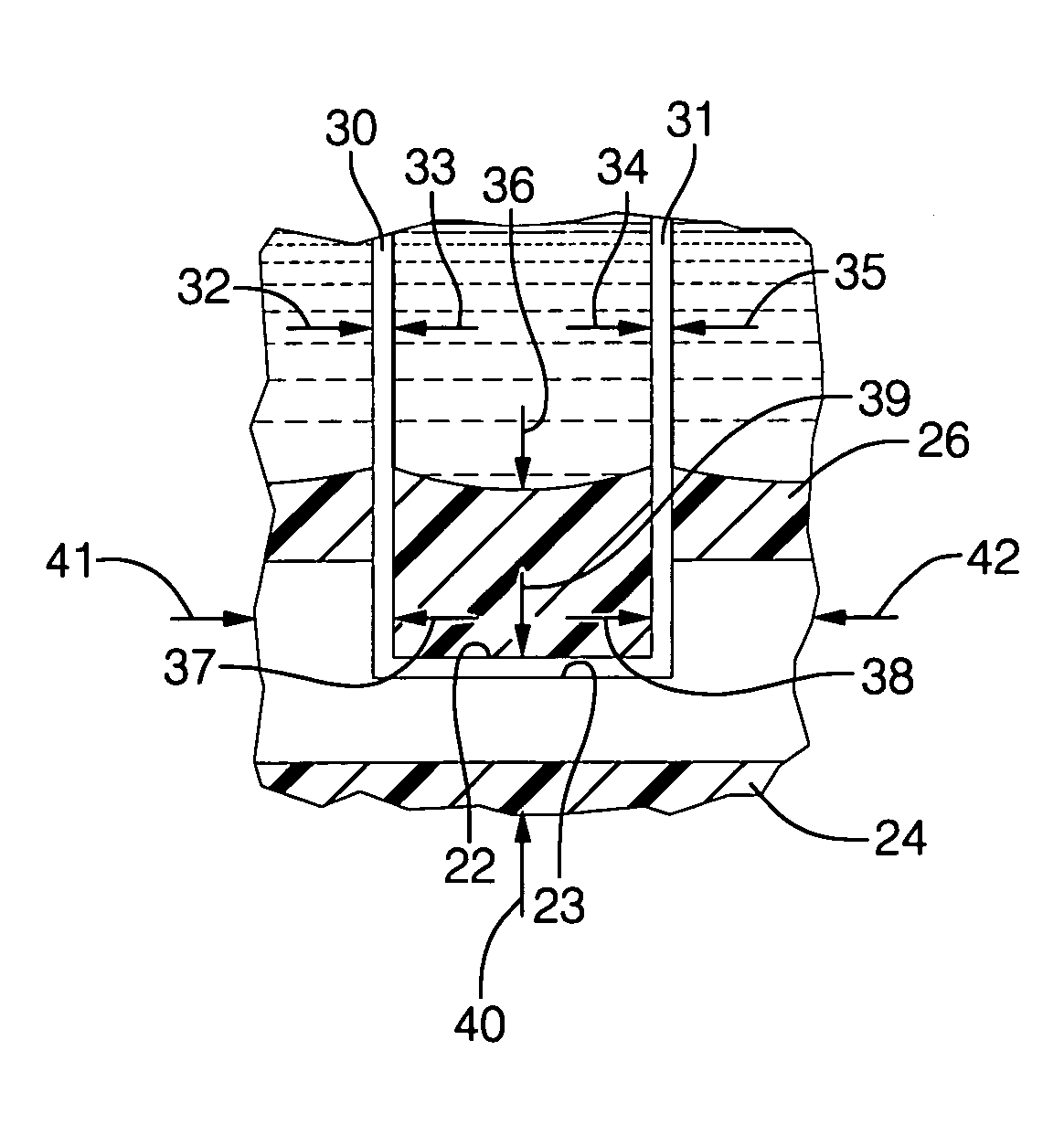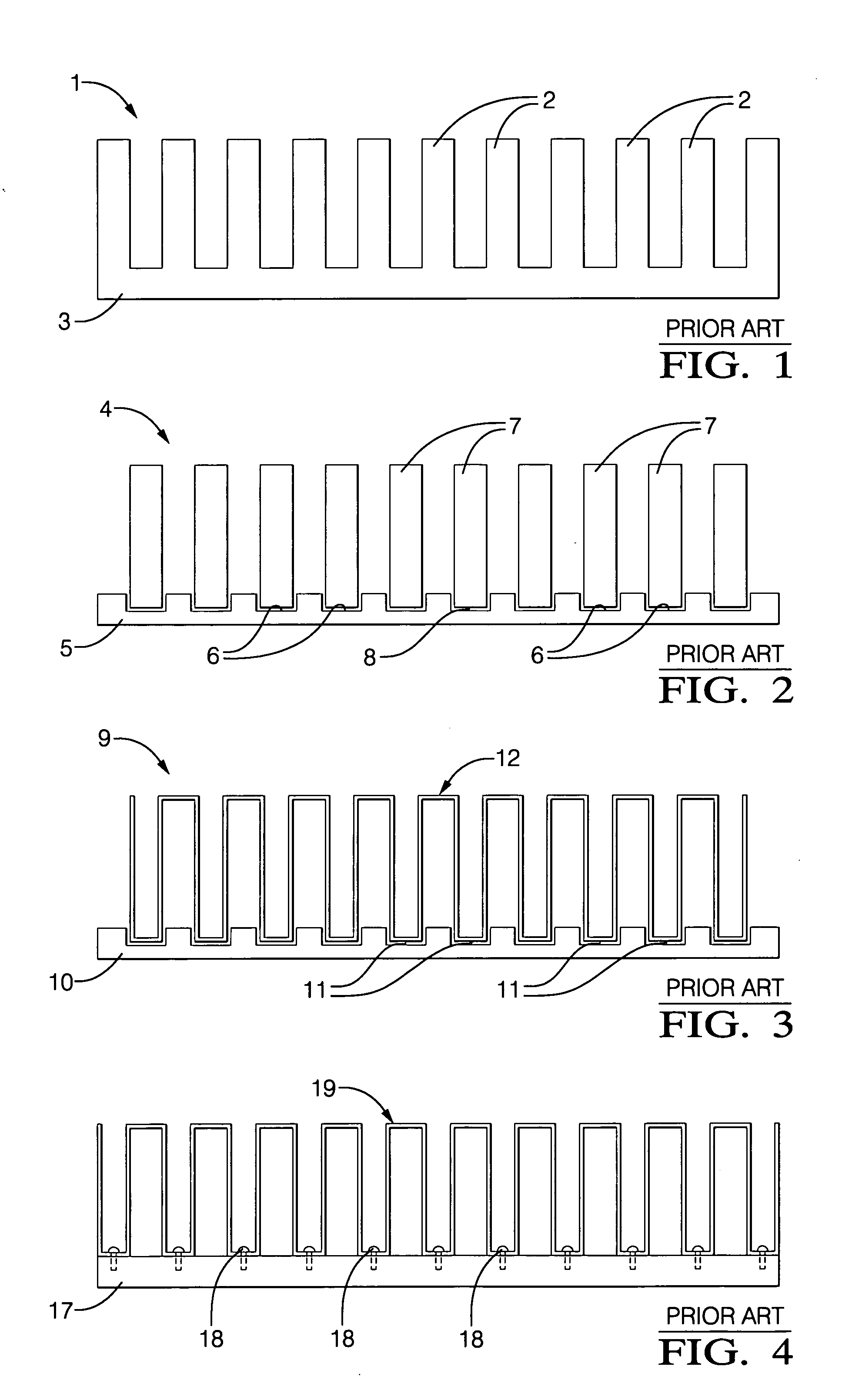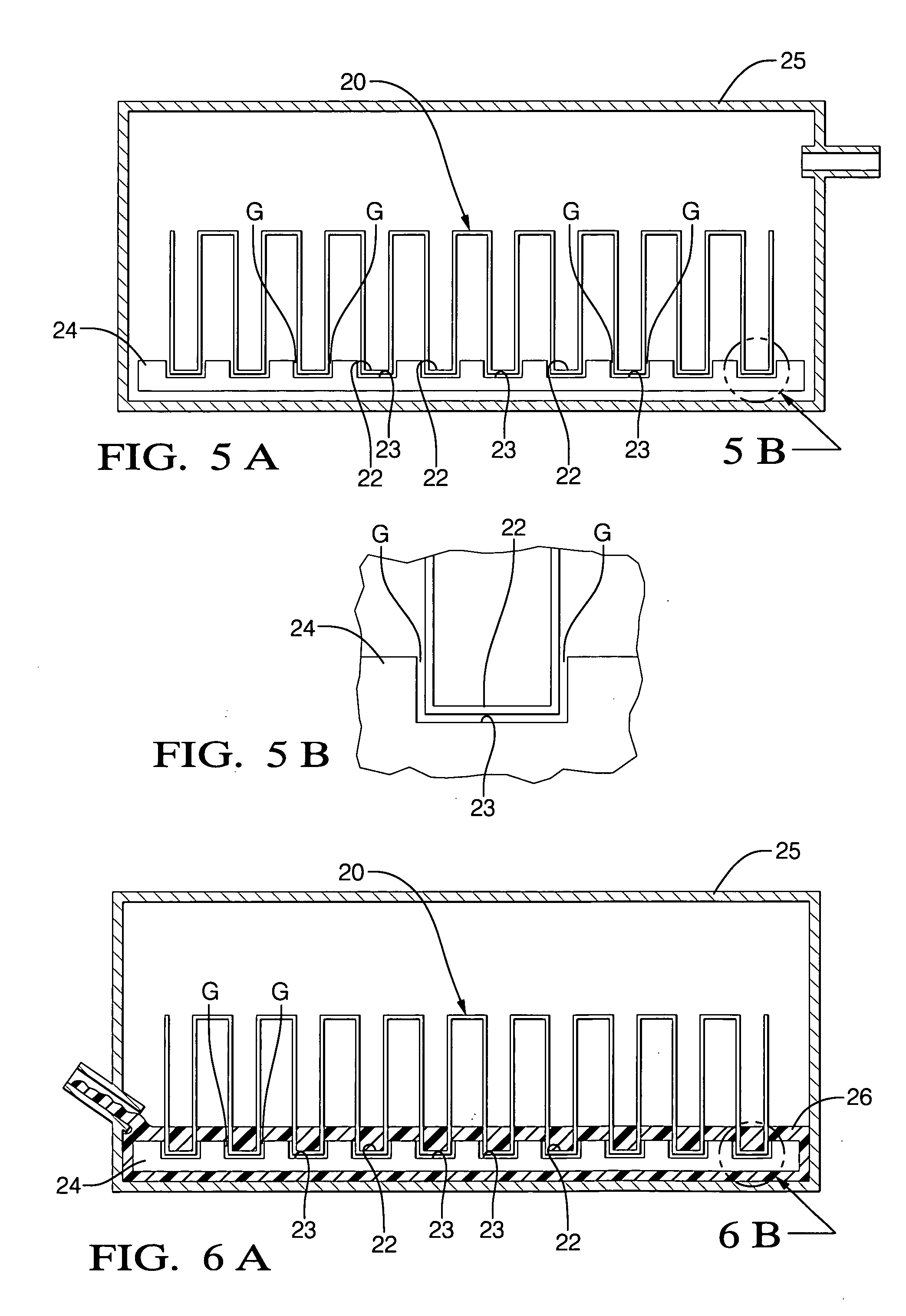Method of making high performance heat sinks
a heat sink and high-performance technology, applied in the direction of lighting and heating apparatus, paper/cardboard containers, semiconductor/solid-state device details, etc., can solve the problem of undisturbed open portion of the fin, and achieve the effect of different size, shape and function
- Summary
- Abstract
- Description
- Claims
- Application Information
AI Technical Summary
Benefits of technology
Problems solved by technology
Method used
Image
Examples
Embodiment Construction
[0031]FIG. 5 is a view of a heat sink pre assembly (not yet fully formed) with a folded comprised of a generally rectangular or U shaped folded fin 20 having a plurality of lower crests 22, which are nested in rectangular grooves 23 in a base plate 24. The crest 22 can be considered the short fold between fin walls and a short portion of the integral fin wall to either side thereof, having a basic U shape. This nesting would be done so as to create minimal gaps “G” between the exterior surfaces of the crests 22 and the interior surfaces of the base plate grooves 23, as by a controlled, close press fit. While shown exaggerated for purposes of illustration, no press fit can fully close the gaps g sufficiently to create a sufficiently intimate, solid interface for efficient heat conduction. This fin-plate pre assembly is placed in an evacuatable “glove box”25, so named because hermetic gloves or the like can be used to manipulate work pieces inside the box without jeopardizing the seal...
PUM
| Property | Measurement | Unit |
|---|---|---|
| temperature yield strength | aaaaa | aaaaa |
| yield strength | aaaaa | aaaaa |
| temperature yield strength | aaaaa | aaaaa |
Abstract
Description
Claims
Application Information
 Login to View More
Login to View More - R&D
- Intellectual Property
- Life Sciences
- Materials
- Tech Scout
- Unparalleled Data Quality
- Higher Quality Content
- 60% Fewer Hallucinations
Browse by: Latest US Patents, China's latest patents, Technical Efficacy Thesaurus, Application Domain, Technology Topic, Popular Technical Reports.
© 2025 PatSnap. All rights reserved.Legal|Privacy policy|Modern Slavery Act Transparency Statement|Sitemap|About US| Contact US: help@patsnap.com



